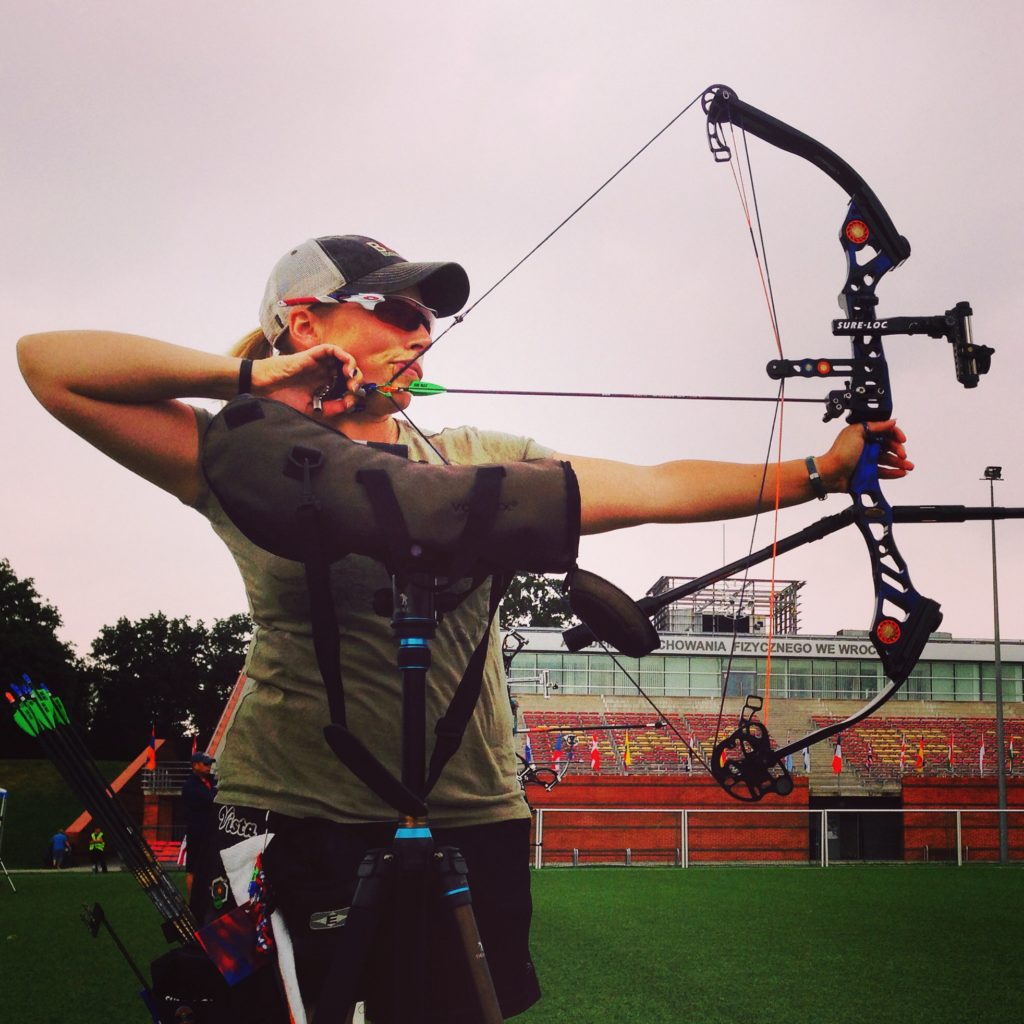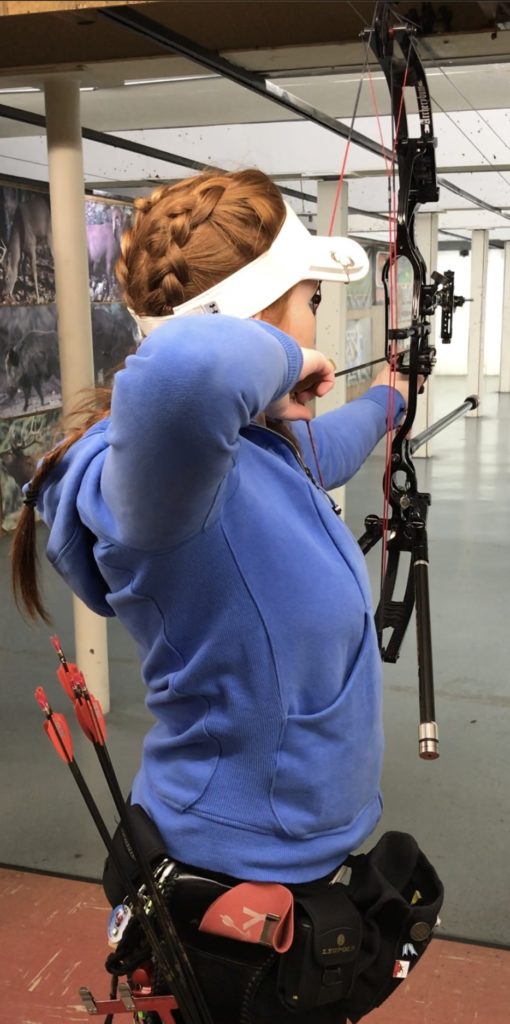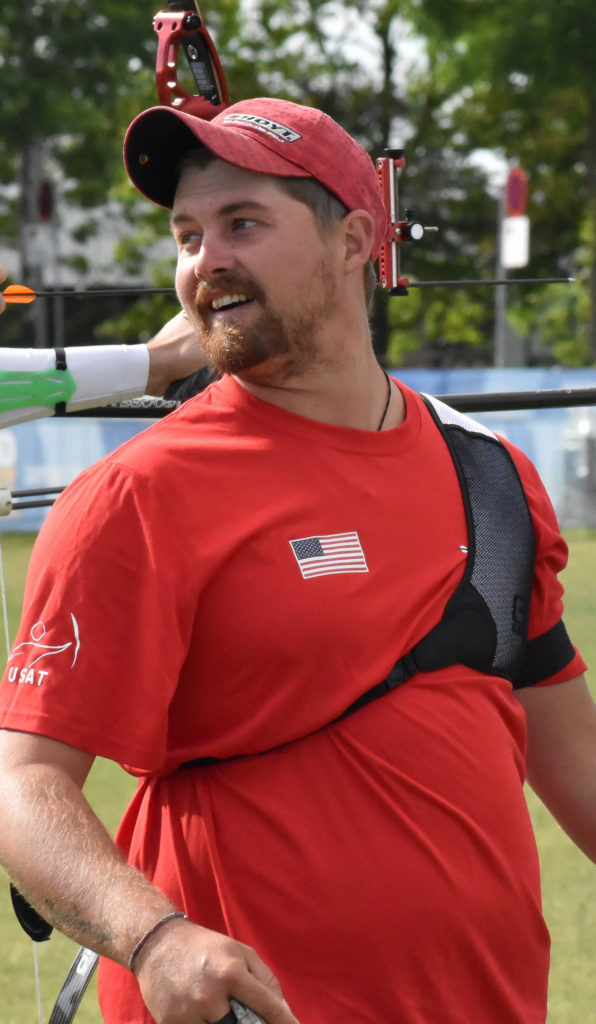Can compound help your recurve shooting? Crystal Gauvin says absolutely.

It’s common in the sport of archery for people to pick a bow type and stick with it for the duration of their career. Those who don’t start on the bow they end up with almost always learn on a recurve and move to a compound. In fact, most will tell you that learning on a recurve will make you a better compound archer.
But what about the other side of the coin? Can shooting a compound help you shoot a recurve? I believe the answer to this is a resounding YES. Here are a few ways in which I believe shooting a compound can improve your recurve shooting.
EXPECTATIONS
One of the most obvious ways shooting compound can help a recurve archer is in expectations. Compound archers generally shoot tighter groups, even as a beginner, than a recurve archer.
This mentally imprints on your brain that you can shoot tighter groups and you begin to expect this. When picking up a recurve, you have now raised your expectations and are less willing to ‘settle’ for bigger group sizes or flyers.
Similarly, scores are generally much tighter across compound divisions than recurve. There may be five archers within a two-point difference, meaning every single arrow really does count, and a single less-than-perfect shot could be the difference between making the podium or not.
You cannot get lazy and let one get away from you. Instilling the mentality that you need to shoot every arrow like it counts (because it does!) can only serve to benefit you.
CLICKER ISSUES
Have you ever felt like you are being controlled by your clicker? If so, then shooting compound can help teach you the feeling of a ‘surprise’ release. Not everyone who picks up a compound has mastered the art of a surprise release; however, it can be a lot easier to teach this fundamental with a compound bow.
One way to start is simply to draw back with a trigger-style release, keeping your finger (or thumb) far from the trigger, as you continue to aim at the target while pulling through the shot; have a friend fire the release carefully for you (safety first).
From here you can progress to learning how to activate the release yourself without knowing when it will go off. Some find a hinge-or back tension-style release to be the quickest way to learn, but I, personally, think that a trigger release has more benefit for a recurve archer because you can think of the trigger acting similarly to the clicker (or your fingers leaving the string).
Another benefit to recurve archery that can be learned from shooting compound is the importance of not over aiming. If you have ever tried to shoot when it is windy, then you understand the concept of ‘aiming off ’. Whether you are aiming in the middle of the target or somewhere off in the black, learning to aim – but not over aim – is an important skill to develop.
Looking at it the other way around; you will find few people arguing that shooting recurve, barebow or traditional archery will not improve your compound technique. Most compounders who try it report that it increases strength and stamina, helps teach the importance of back tension, and provides a refreshing but challenging break. It is, however, difficult to imagine that you could become exceptional at both disciplines – although Brady Ellison, who began his archery career as a junior compound champion, could almost certainly give the elite a run for their money.
For example, when using a compound scope with a magnified lens, it is much easier to ‘see’ the target you are aiming at. Many find their eyes do not focus as much on their dot or aiming aperture once the target is in greater focus.
This idea of relaxing your eyes to look through your aperture can then be taken back and applied with a recurve, even though there is no magnification. In addition, it can be much easier to perform ‘aiming’ drills with a compound, since there is much less holding weight at full draw.
One of the first things a recurve archer might notice when they pick up a compound is how much heavier the bow is, both in terms of mass weight and the initial draw. It is quite typical for compound archers to shoot bows weighing between 8-11lb (when stabilisers and other accessories are added on), while most recurve archers shoot bows in the 5-8lb mass weight range. Similarly, most top target compound archers shoot draw weights between 48-60lb, while few recurve archers shoot above 50lb.
Even though compound archers are not holding the entire draw weight when they reach anchor, the beginning part of the draw cycle is arguably more difficult because they do have to fight initially against the full draw weight when pulling back the string; this is the opposite of recurve archery, where the difficulty of the draw cycle increases until the archer is holding the entire weight at full draw.
Despite this major difference, shooting a compound bow allows recurve archers to develop strength in a different set of muscles. This is important because muscle imbalances greatly increase the risk of injury.
Lastly, there are numerous scientific studies examining the benefits of not specialising in one sport (or discipline) for life. While the research would more broadly tout the benefits of an archer playing another sport (think football, tennis or sailing) or learning to play a musical instrument, I think the same theories apply to a recurve archer picking up a compound bow to shoot.
They still have the opportunity to strengthen other muscles and develop new neural pathways, which studies show is the secret to success for many top performers. Among athletes who go on to become elite, broad early experience and delayed specialisation is the norm.
When someone actually takes time to study how breakthroughs occur, these players did less organised practice but greater proportions of playing activities.
I hope I’ve made it clear that experience of multiple bowstyles is beneficial to your ‘main’ bowstyle. A handful of archers become generalists and shoot a different style every time they return to a tournament. Maybe that could be you?



